Trimming fan leaves during flowering helps you manipulate the growth cycle of your plants, and sometimes you’ll find that entirely removing fan leaves during flowering or vegetating is the right move for what your plant needs.
The easily recognizable cannabis fan leaf has served as the weed culture mascot for decades, but ensuring fan leaves are properly managed throughout the vegetative and flowering stages is essential to plant health, psychoactive effects, medical benefits, and overall retail prices for cultivators and brands. Recognizing major leaf problems is something everyone around the garden should know how to do.
As a commercial grower or employee working in cannabis cultivation, it’s important to know what approach to take with your cannabis fan leaves to optimize quality output: when to remove them, how to prune them, and what to do with the leftover plant material or scraps to avoid waste and maximize profitability.
What do cannabis fan leaves do?
Marijuana fan leaves are the powerhouse of the photosynthesis process: where plants use sunlight, water, and carbon dioxide to create oxygen and energy for cellular growth. Like most plants, a cannabis plant grows upward and outward, drawing nutrients and water from the roots and passing them along to the bud sites and marijuana leaves.
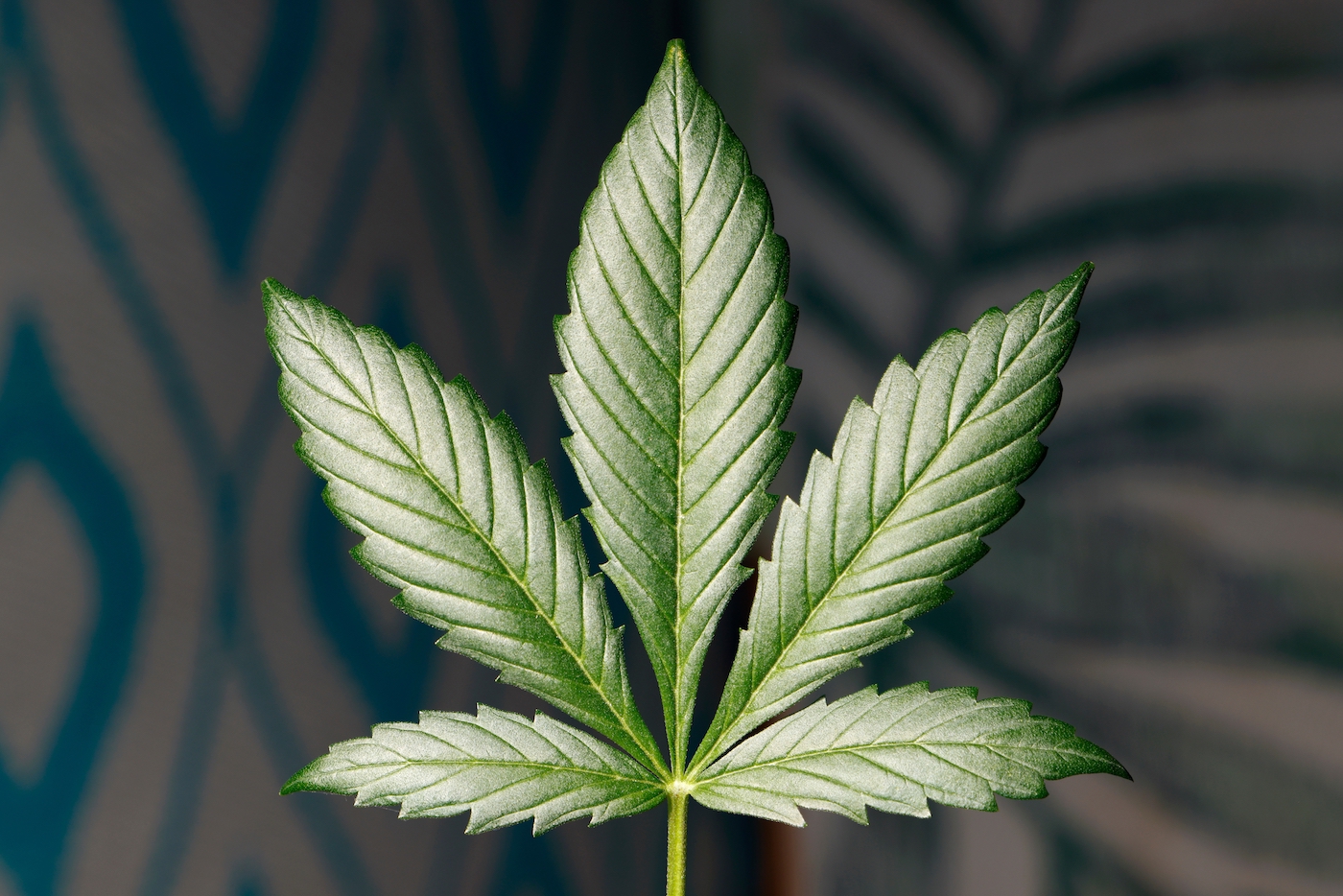
While a large plant sounds like the ultimate goal for most people growing cannabis, big fan leaves are not necessarily a good sign or even indicative of a quality plant.
If fan leaves are allowed to grow too much, they may hinder your success, blocking valuable light penetration and airflow from the bottom of the plants when they need it most, which is especially important if you’re growing outdoor plants that rely on the sun’s light and a natural breeze.
This is why it’s important to know when to remove fan leaves on outdoor plants — and to be able to differentiate between when those healthy leaves need to be removed entirely or simply pruned down slightly.
When to remove fan leaves from cannabis plants
Removing or “defoliating” fan leaves is something you’ll definitely need to understand as a commercial grower or employee at a cultivation facility.
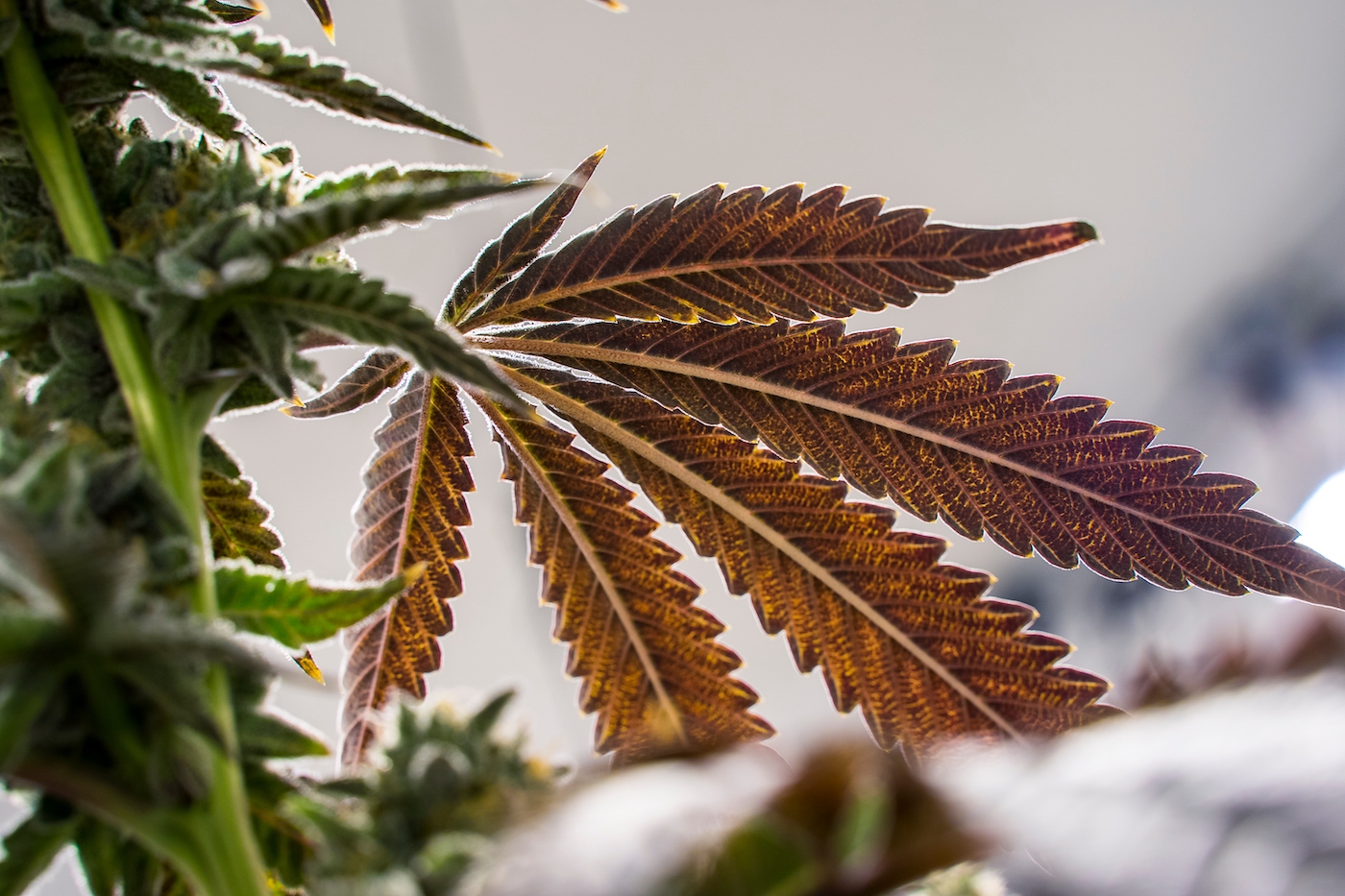
Cannabis defoliation will most often be required during your plants’ vegetative stage when your seedlings are growing rapidly and vertically. This growth is essential to pay attention to, as it can occur very quickly and can have a damaging effect on your plant’s access to sunlight, leaving you in hot water and scrambling to salvage your crop if you’re not careful.
To avoid this from happening, you can remove large cannabis fan leaves to keep an even light source that’s able to shine on all of your bud sites. Plants react faster than many of us realize, and this shift in lighting access will signal to your cannabis that it is entering the flowering phase, the final stage of growth.
Removing leaves during the vegetative stage won’t have a negative effect on the flowering process — in fact, if you fail to properly prune and/or remove the large weed leaves, the flowering process is much more likely to go awry.
Trimming fan leaves during flowering stage
It’s usually a good idea to trim leaves during flowering stage. This process is always centered around light and your plant’s access to it. If any part of your plant is blocked from getting the light it needs to flourish and develop, carefully remove the fan leaves to ensure the process continues without a hitch.
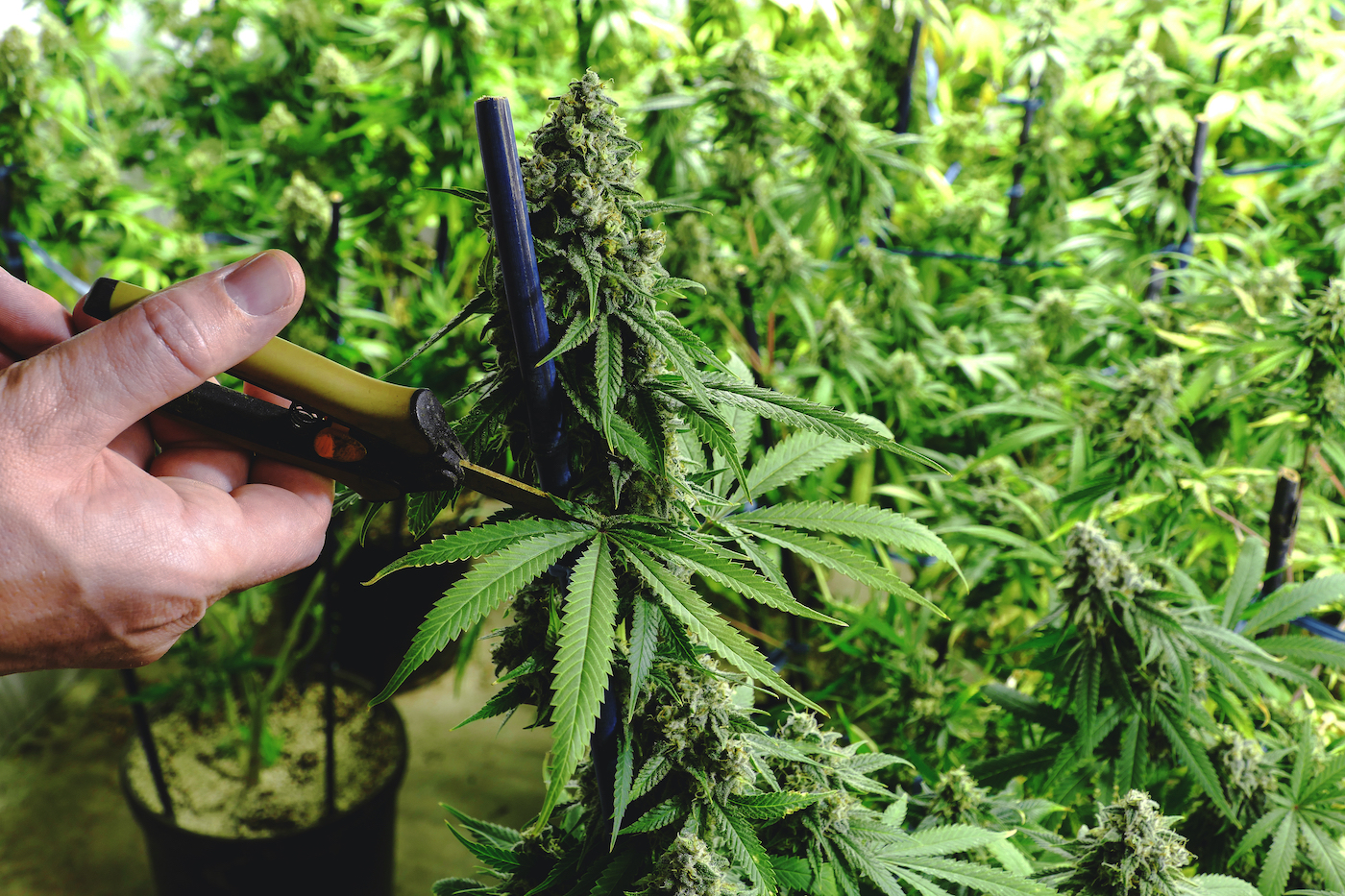
Another feature to pay attention to when removing cannabis fan leaves is the color and overall appearance of the plant.
When pot leaves are attacked by pests and diseases or growing in an environment that isn’t conducive to proper development, they can wilt, die off, or turn yellow and/or brown. Such leaves need to be removed as quickly as possible to keep them from spreading to other parts of the plant and essentially ruining your product. A damaged leaf won’t function efficiently, which effectively siphons energy from other parts of the plant until it’s removed.
Regular Fan Leaf Pruning
Of course, removing your marijuana fan leaves entirely isn’t always necessary for a healthy plant to thrive. However, a small amount of pruning is just the thing you need for success.
Similar to defoliation, pruning leaves will be most often required during your plant’s vegetative stage, but it should be something you keep an eye on throughout its entire development.
Are they receiving enough exposure to their light source? Have pests or diseases begun to take root?
With time, you’ll understand when it’s time to prune or remove entirely, but staying on top of the pruning throughout the process will help you to avoid the latter at the end of the day.
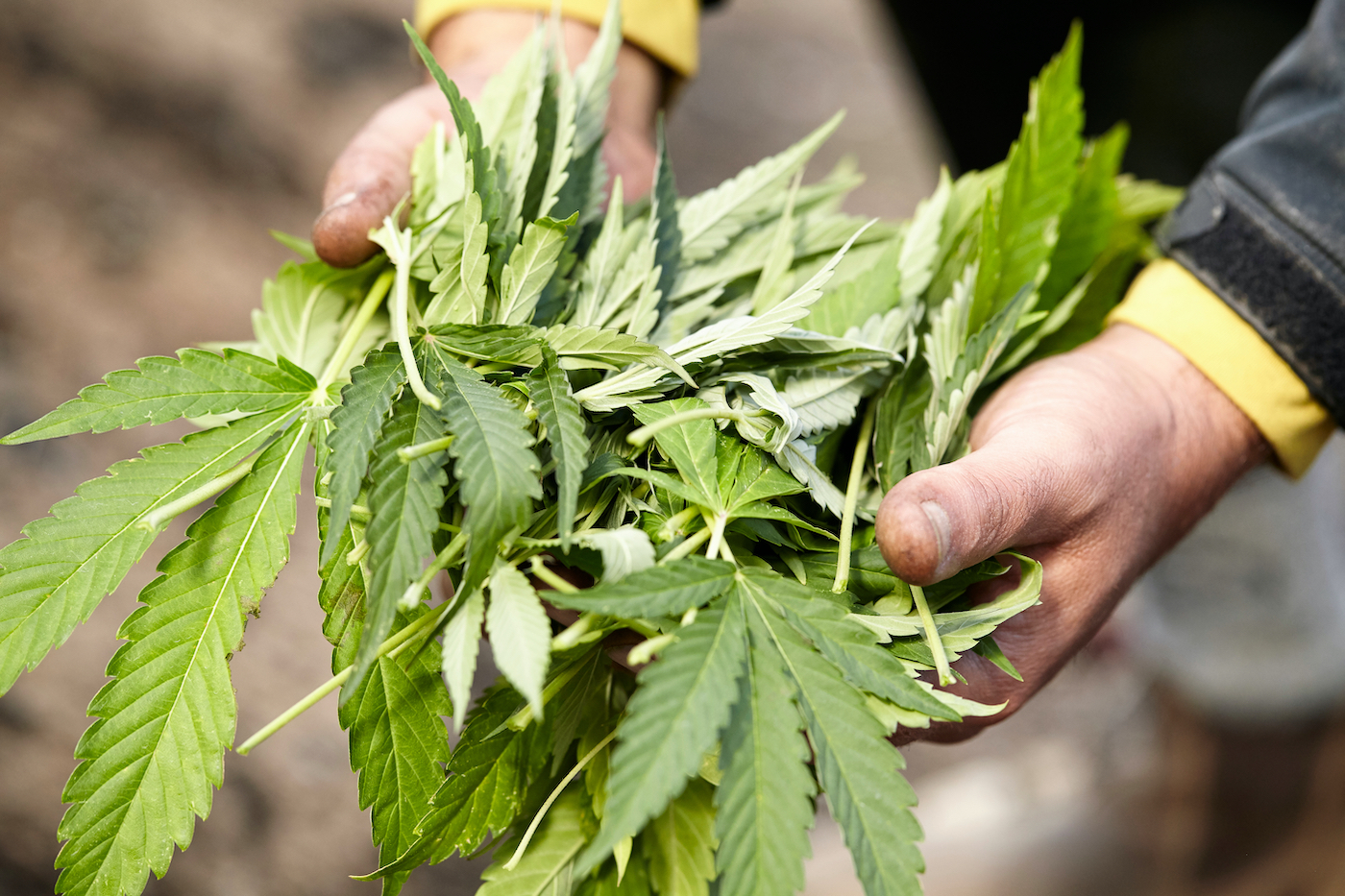
What to do with leftover fan leaves
Once the fan leaves are removed, you may be tempted to dispose of the leftover plant material, but in an industry that needs to prioritize sustainability and maximize yield, leave nothing to waste.
There are a few ways to utilize your leftover leaves for commercial use, depending on your business model and what you want to offer your consumers.
Save for hemp blunt wraps
The most obvious option is to turn those large fan leaves into wraps or rolling papers. This is a win-win-win for cultivators, retailers, and consumers: cultivators can eliminate waste and maximize profit, retailers can offer a sustainable and eco-friendly product at a much lower cost, and consumers can enjoy their smoke sesh in an entirely natural and organic manner.
Process for trichomes and lesser-known cannabinoids
Cannabis fan leaves produce far fewer cannabinoids and other active components than buds or sugar leaves, but you can process them into other cannabis-related products and concentrates if any trichomes are present. Cultivars with especially resinous production will have more valuable fan leaves for extraction machines. While many home growers use their fan leaves as a dietary supplement, commercial processors can make hash or ointments with anti-inflammatory properties thanks to the abundance of THCA, THCVA, and other lesser-known cannabinoids.
Inputs for making edibles
You can easily transform your discarded leaves into valuable fodder for things like cannabis coconut oil, cannabutter, or herbal teas. Again, these leaves can still contain some valuable trichomes and cannabinoids if they’ve been kept in good health, which can result in some pretty powerful edibles at a much lower cost for you and your team.
Frequently asked questions about trimming fan leaves
Should you remove fan leaves?
Yes, removing or pruning some fan leaves is a necessary step when cultivating cannabis healthy plants. When fan leaves become too large or abundant, they block the light and airflow to parts of the plant that can hinder trichome and cannabinoid production.
What’s the difference between fan leaves and sugar leaves?
Fan leaves are the large, recognizable seven-point leaves most commonly associated with cannabis. Fan leaves grow from the stem and function as the photosynthesis powerhouse, working with the root system to provide the plant with everything it needs to grow. Sugar leaves are smaller and protrude from the buds of a cannabis plant. They are often coated in trichomes when they reach the end of the flowering phases, making them ideal for processing into concentrates or inputs for edibles.
Does trimming fan leaves increase the yield?
When performed properly, trimming fan leaves can increase the yield of a cannabis plant. Trimming or defoliation helps fight pests, reduce the chances for mold, and increase light exposure and airflow to lower nodes which can increase production. Some experienced cultivators believe heavy defoliation trigger’s the plant’s defense mechanisms, resulting in a more potent flower with stronger active compounds that decrease its attractiveness to predators. Other cultivators believe that removing the fan leaves will better expose the buds to pollinators, leading to healthier plants with better buds in a natural ecosystem. However, over trimming can negatively impact photosynthesis and limit a plant’s production as a result.
Are big fan leaves a good sign?
Big fan leaves with a deep green color can be an indicator of a healthy plant, especially during early growth stages. While larger fan leaves have the ability to collect more sunlight, they can also block more light and airflow which can damage cannabis and hemp plant flower or bud production.







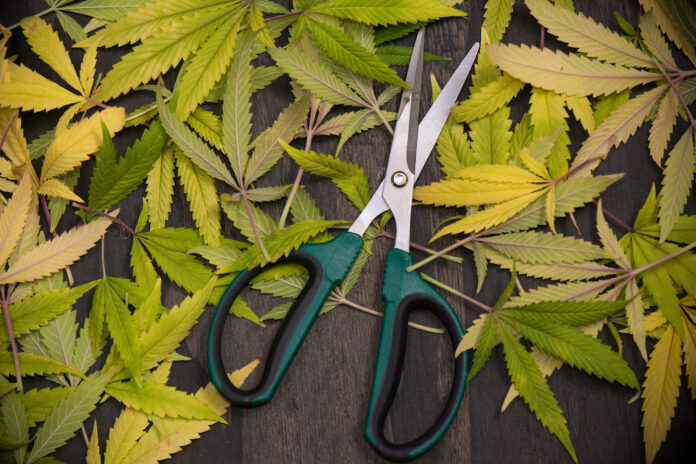

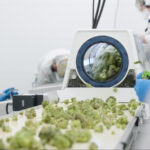

[…] which is a big benefit of growing cannabis seeds in some climates,” said Lind. “With regular pruning to ensure proper airflow, strains like California Octane that were crossed from two PM-resistant parents in Dream Queen and […]
[…] Enhances biodiversity: No-till farming promotes biodiversity in the soil, supporting a variety of beneficial organisms like earthworms and microorganisms that contribute to soil fertility and plant health. […]
[…] example, removing a few wilting leaves would be considered a low-stress activity, while incorrectly trimming fan leaves by removing far too much healthy plant material would be considered a high-stress […]
[…] the low and slow drying method to process cannabis plants after harvest. Plants get chopped down, fan leaves get removed, and what’s left hangs until it’s dry. This classic method dries the cannabis plants at a […]
[…] species (green lacewings) for knocking down clusters of aphids that develop on the stems and underside of fan leaves. The larvae of these delicate green bugs are small, fast, and aggressive predators capable of […]
[…] infested plant partsIf you spot any signs of mealybugs during an inspection, promptly prune and remove affected plant parts taking care not to shake any bugs off when pruning. This can help prevent them from spreading to […]
[…] chlorophyll production and regulates processes like photomorphogenesis, which is essential for leaf expansion, stem elongation, and overall plant […]
[…] Bud rot can be caused by growing plants in unstable temperature and humidity ranges, growing oversized buds without checking on them properly, having poor pest control, and getting lazy about regularly trimming fan leaves. […]
[…] cannabis plants encourages them to focus their limited resources on producing better buds, schwazzing could have its place in forcing companies to strengthen the weakest parts of their operations and […]
[…] to preventing outgassing and contamination, providing protection from temperature fluctuation, blocking harmful light, and preserving delicate trichomes, cultivators have many new options for ensuring their products […]